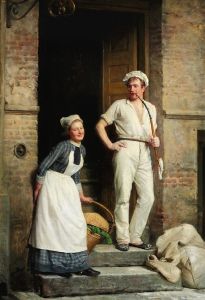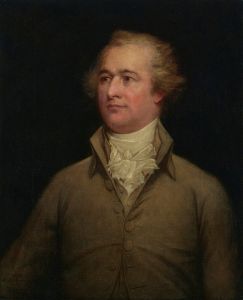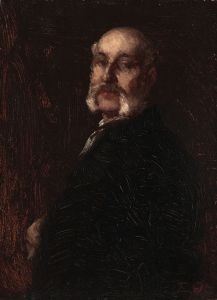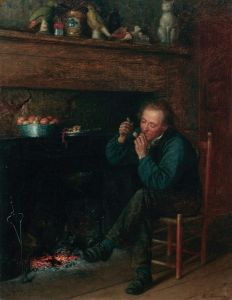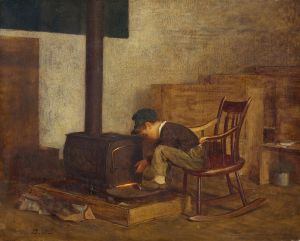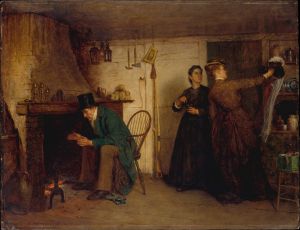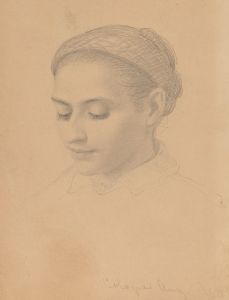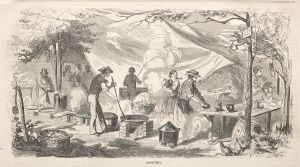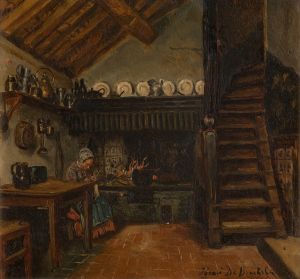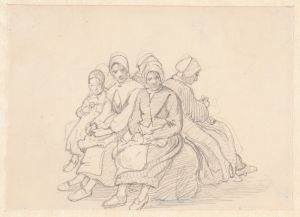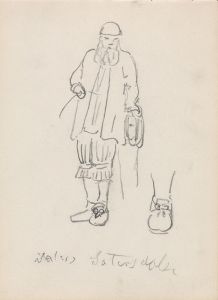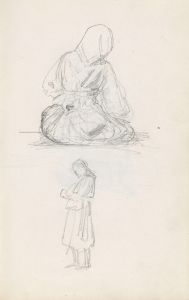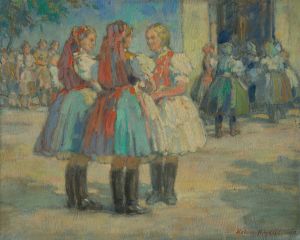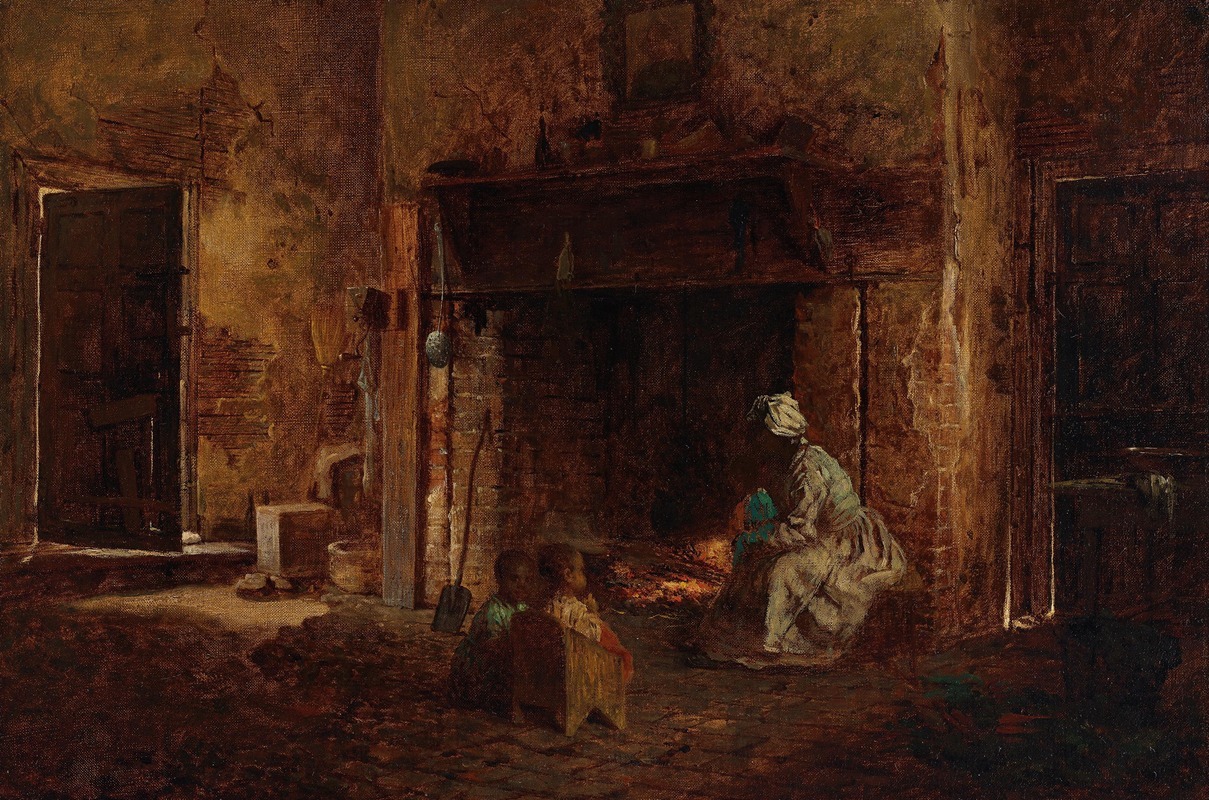
Kitchen at Mount Vernon
A hand-painted replica of Eastman Johnson’s masterpiece Kitchen at Mount Vernon, meticulously crafted by professional artists to capture the true essence of the original. Each piece is created with museum-quality canvas and rare mineral pigments, carefully painted by experienced artists with delicate brushstrokes and rich, layered colors to perfectly recreate the texture of the original artwork. Unlike machine-printed reproductions, this hand-painted version brings the painting to life, infused with the artist’s emotions and skill in every stroke. Whether for personal collection or home decoration, it instantly elevates the artistic atmosphere of any space.
"Kitchen at Mount Vernon" is a painting by the American artist Eastman Johnson, created in 1857. Eastman Johnson was a prominent 19th-century American painter known for his genre scenes, which often depicted everyday life and domestic settings. He was a co-founder of the Metropolitan Museum of Art in New York City and is considered one of the most significant genre painters of his time.
The painting "Kitchen at Mount Vernon" is part of Johnson's exploration of American life and history. It captures a scene from Mount Vernon, the plantation home of George Washington, the first President of the United States. Mount Vernon, located in Virginia, was a working plantation during Washington's lifetime and has since become a historic landmark and museum.
In this artwork, Johnson portrays an interior view of the kitchen at Mount Vernon. The scene is intimate and detailed, reflecting Johnson's skill in capturing the nuances of light and texture. The painting includes figures engaged in various activities typical of a working kitchen during the 18th century. Johnson's attention to detail provides insight into the domestic life and labor that sustained such a large estate.
Eastman Johnson's work often highlighted themes of American identity and history, and "Kitchen at Mount Vernon" is no exception. By choosing to depict a scene from Mount Vernon, Johnson connects his work to the legacy of George Washington and the early history of the United States. The painting can be seen as a reflection on the domestic and social structures of the time, offering a glimpse into the lives of those who lived and worked at the estate.
Johnson's technique in "Kitchen at Mount Vernon" is characterized by his use of rich colors and careful attention to light and shadow. This creates a warm and inviting atmosphere, drawing the viewer into the scene. His ability to convey the textures of different materials, from the roughness of wooden surfaces to the softness of fabric, adds to the realism and depth of the painting.
The painting is part of the collection at the Reynolda House Museum of American Art in Winston-Salem, North Carolina. The museum is known for its extensive collection of American art, and Johnson's work is a significant part of its holdings. "Kitchen at Mount Vernon" is appreciated not only for its artistic merit but also for its historical significance, offering viewers a window into a specific time and place in American history.
Overall, "Kitchen at Mount Vernon" exemplifies Eastman Johnson's ability to capture the essence of American life through his detailed and thoughtful compositions. The painting remains an important piece within the canon of American art, reflecting both the everyday realities and the historical context of its setting.





